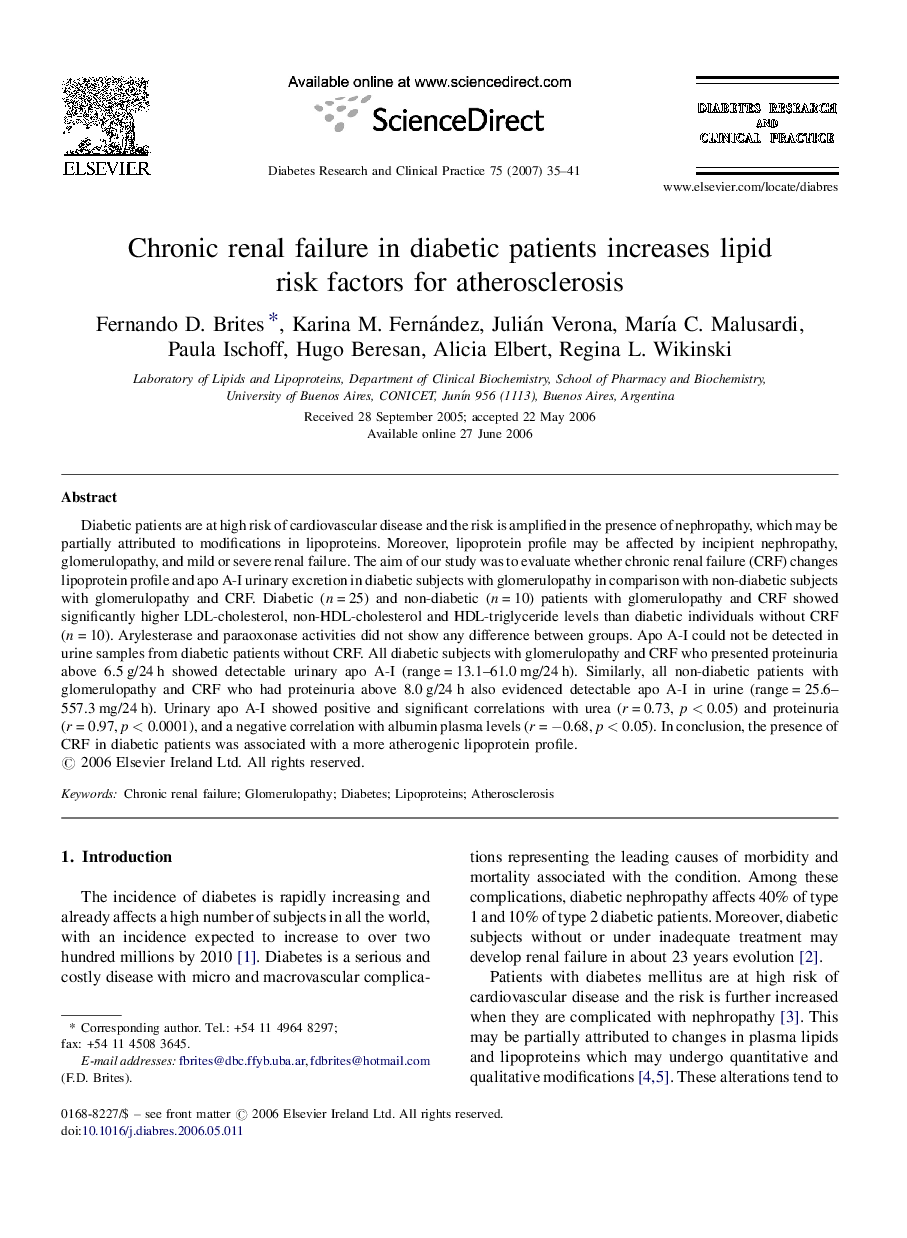| Article ID | Journal | Published Year | Pages | File Type |
|---|---|---|---|---|
| 2798803 | Diabetes Research and Clinical Practice | 2007 | 7 Pages |
Diabetic patients are at high risk of cardiovascular disease and the risk is amplified in the presence of nephropathy, which may be partially attributed to modifications in lipoproteins. Moreover, lipoprotein profile may be affected by incipient nephropathy, glomerulopathy, and mild or severe renal failure. The aim of our study was to evaluate whether chronic renal failure (CRF) changes lipoprotein profile and apo A-I urinary excretion in diabetic subjects with glomerulopathy in comparison with non-diabetic subjects with glomerulopathy and CRF. Diabetic (n = 25) and non-diabetic (n = 10) patients with glomerulopathy and CRF showed significantly higher LDL-cholesterol, non-HDL-cholesterol and HDL-triglyceride levels than diabetic individuals without CRF (n = 10). Arylesterase and paraoxonase activities did not show any difference between groups. Apo A-I could not be detected in urine samples from diabetic patients without CRF. All diabetic subjects with glomerulopathy and CRF who presented proteinuria above 6.5 g/24 h showed detectable urinary apo A-I (range = 13.1–61.0 mg/24 h). Similarly, all non-diabetic patients with glomerulopathy and CRF who had proteinuria above 8.0 g/24 h also evidenced detectable apo A-I in urine (range = 25.6–557.3 mg/24 h). Urinary apo A-I showed positive and significant correlations with urea (r = 0.73, p < 0.05) and proteinuria (r = 0.97, p < 0.0001), and a negative correlation with albumin plasma levels (r = −0.68, p < 0.05). In conclusion, the presence of CRF in diabetic patients was associated with a more atherogenic lipoprotein profile.
